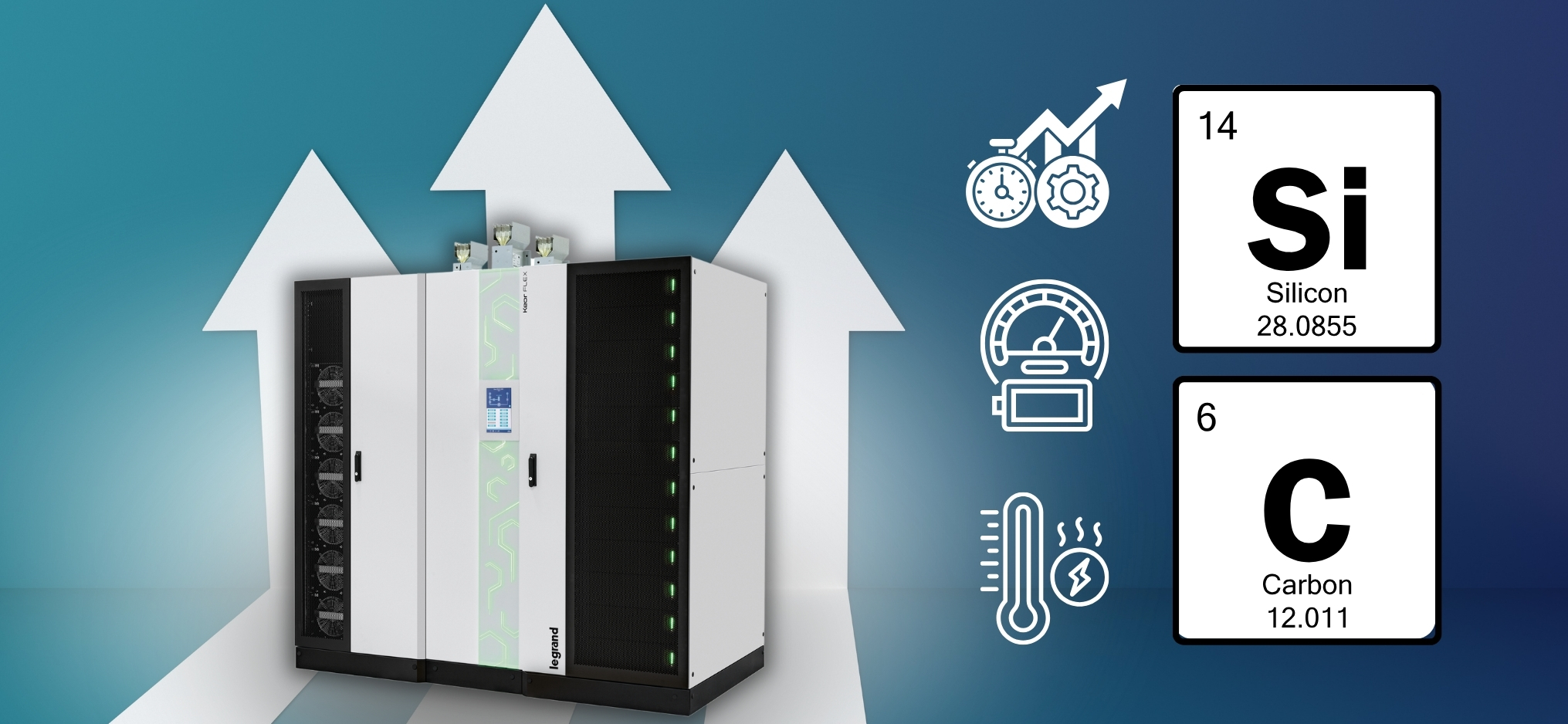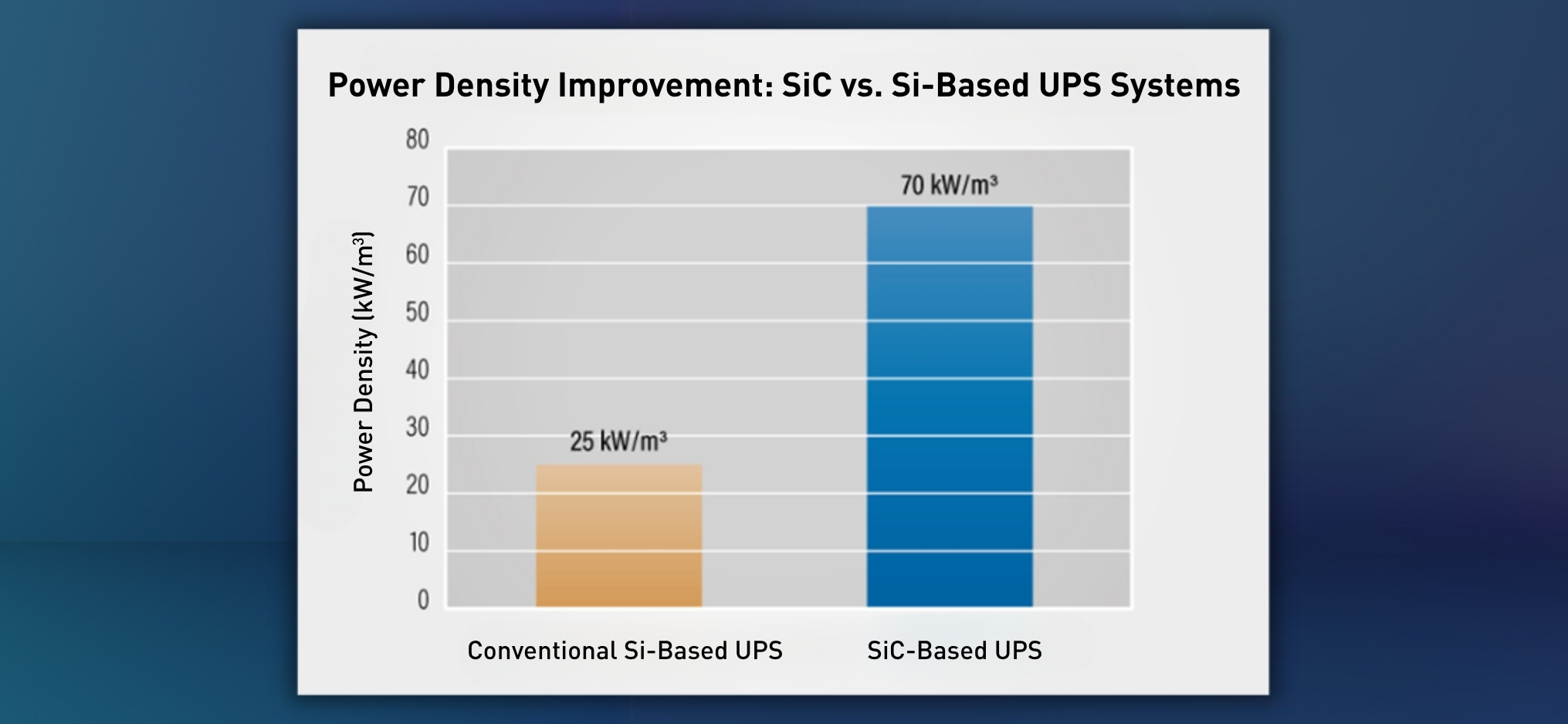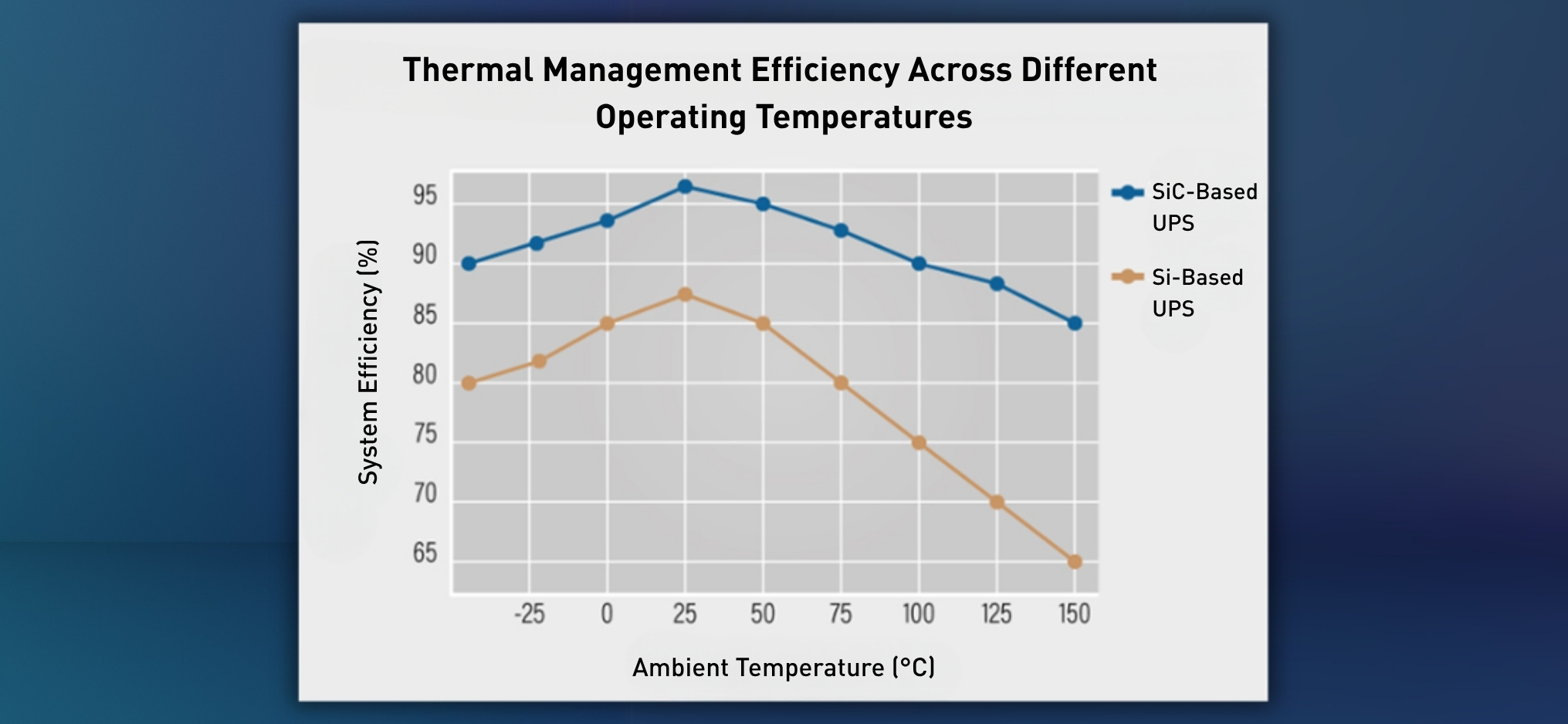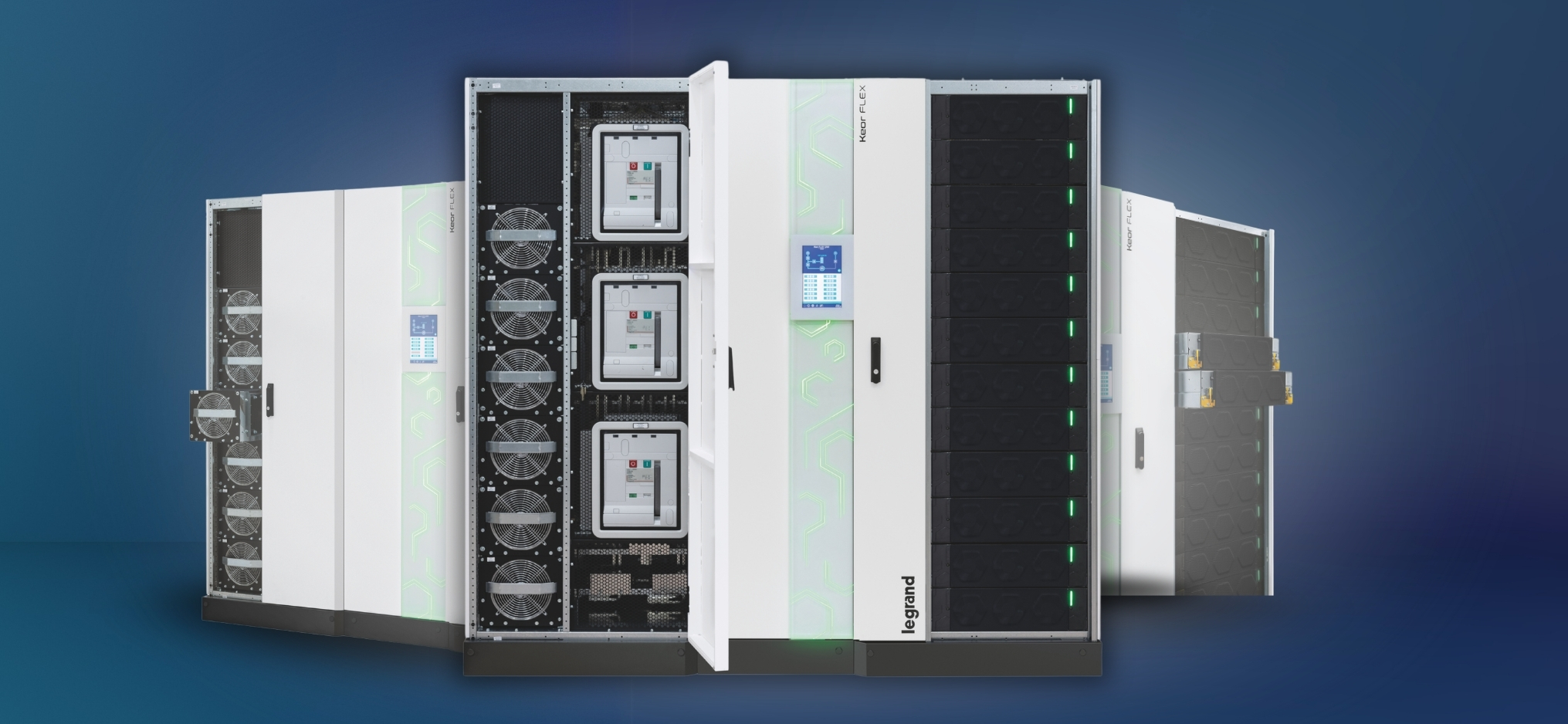Silicon Carbide (SiC) – Redefining High-Efficiency UPS for Modern Demands

As power demands soar in data centers and industrial environments, traditional silicon-based Uninterruptible Power Supply (UPS) systems are reaching their performance limits. Enter Silicon Carbide (SiC)—a next-generation semiconductor technology that is transforming the UPS landscape with unparalleled efficiency, power density, and thermal performance.
Why Silicon Carbide is Reshaping the Future of UPS Systems
For decades, Silicon has been the core material used in UPS systems. However, it has several drawbacks, such as lower thermal conductivity, reduced tolerance to high temperatures, and higher switching losses. These limitations make it increasingly less suitable for today’s high-demand environments. In contrast, Silicon Carbide (SiC), a wide-bandgap semiconductor, overcomes these challenges, offering significantly improved electrical performance, thermal management, and long-term reliability.
SiC offers several critical benefits:
1. Enhanced Efficiency and Power Performance
SiC has a wide bandgap of 3.26 eV—substantially higher than Silicon’s 1.12 eV—allowing it to operate efficiently at higher voltages, switching frequencies, and temperatures. These advantages drastically reduce energy losses, allowing SiC-based UPS systems to achieve more than 98% efficiency in power conversion, thereby reducing energy waste and operational costs over time.
2. Compact Power Density
Due to its lower on-state resistance and thinner drift region, SiC enables the creation of compact UPS designs that can be up to three times smaller than their Silicon counterparts. This size reduction is particularly beneficial in dense, high-performance environments like AI and edge data centers.

3. Superior Thermal Management
SiC’s thermal conductivity is more than three times that of Silicon, which decreases the need for large or complex cooling systems. This not only simplifies the overall system design but also reduces energy consumption and extends the lifespan of components.

From Specialized Use to Mainstream Deployment
Originally used in demanding fields like aerospace and electric vehicles, SiC is now becoming the go-to material for UPS systems. Today’s leading SiC-powered UPS units offer:
- Switching frequencies above 100 kHz
- Power density levels exceeding 70 kW/m³
- Junction thermal tolerance up to 300°C
- Online double-conversion efficiency ranging from 97 to 99%
Thanks to advancements in manufacturing and broader industry adoption, SiC-based UPS systems have become both technically and commercially appealing solutions for modern power systems.
Practical Advantages: Efficiency, Durability, and Sustainability
SiC-powered UPS systems are unmatched in mission-critical environments where reliability is vital. They exhibit exceptional thermal durability, lower failure rates, and longer service lives—all contributing to a reduced total cost of ownership.
From a sustainability standpoint, SiC minimizes overall energy consumption by reducing the conduction and switching losses. Its improved efficiency also cuts cooling demands, which can account for up to 40% of a data center’s energy usage, directly supporting environmental and energy-saving goals.
Setting a New Benchmark
SiC technology has shifted from a niche solution to the new benchmark for performance and reliability. With its high energy efficiency, compact footprint, and superior thermal resilience, SiC-based UPS systems are leading the shift toward smarter, more sustainable data center power infrastructure.
As digital transformation accelerates, UPS systems utilizing SiC technology are proving vital in meeting the increasing demands for scalable, reliable power. For any organizations seeking to future-proof their critical infrastructure, SiC represents a significant advancement.
Discover SiC in Action: Keor FLEX by Legrand
Legrand’s Keor FLEX UPS is a state-of-the-art, modular solution that harnesses the power of SiC to deliver up to 98.4% online double-conversion efficiency. Designed to optimize total cost of ownership (TCO), Keor FLEX combines true hot-swap modularity with hot synchronization, enabling safe, uninterrupted power module replacement without downtime.
Keor FLEX features a front-access design, redundant ventilation with controlled fan speed, and “error-proof” swap/plug mechanisms that allow for self and hot firmware adaptation. Smart-grid ready and equipped with predictive diagnostics, it provides real-time monitoring and maintenance based on actual component life cycles, minimizing unnecessary replacements and maximizing uptime.
Scalable from 100 kW to 4.8 MW, Keor FLEX is a future-ready, modular UPS built for flexibility, serviceability, and high-performance protection — with 100 kW power modules enabling configurations from 100 kW up to 1.2 MW in a single system and parallel operation of up to four units reaching 4.8 MW.

Keor FLEX redefines power protection for modern data centers. Contact us to learn how it can optimize your total cost of ownership here.
























 Canada
Canada
 Latin America (English)
Latin America (English)
 Latin America (Espanol)
Latin America (Espanol)
 USA
USA
 China
China
 India
India
 Japan
Japan
 Republic of Korea
Republic of Korea
 South East Asia (English)
South East Asia (English)
 Austria
Austria
 Belgium
Belgium
 France
France
 Germany
Germany
 Italy
Italy
 Netherlands
Netherlands
 Spain
Spain
 Switzerland
Switzerland
 Turkey
Turkey
 UK
UK
 Africa (english)
Africa (english)
 Africa (français)
Africa (français)
 Middle East (english)
Middle East (english)
 Australia
Australia
 New Zealand
New Zealand